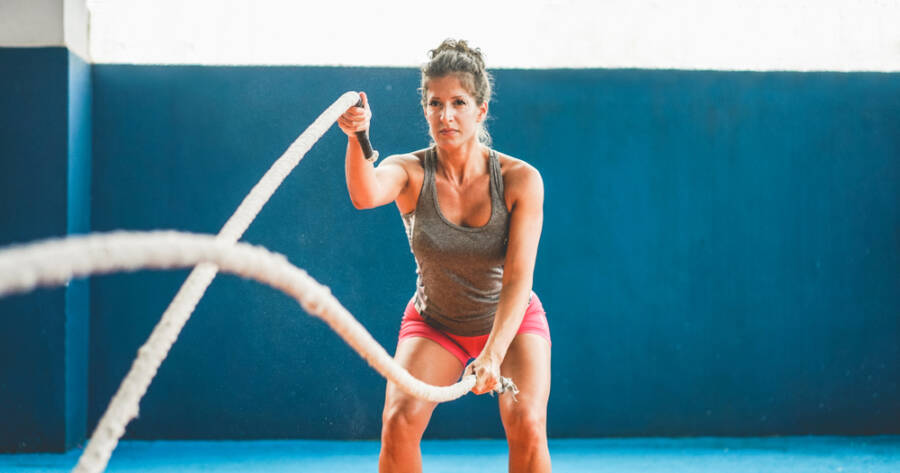In the world of fitness, there’s no shortage of trendy workouts and flashy gym routines. But when it comes to enhancing your quality of life, functional fitness is where the real magic happens. Functional fitness focuses on exercises that mimic everyday movements- helping you move better, feel stronger, and prevent injuries in daily life. Whether you’re lifting groceries, climbing stairs, or playing with your kids, functional fitness supports your body in the ways it needs most.
What Is Functional Fitness?
Functional fitness is about training your muscles to work together and prepare them for daily tasks by simulating common movements. These workouts often involve multiple muscle groups and joints, rather than isolating one area. The goal is to improve strength, balance, flexibility, coordination, and endurance in a way that directly translates to real-world activities.
Unlike some traditional gym routines that focus solely on aesthetics, functional fitness aims for practical strength and mobility- allowing your body to perform optimally in everyday situations, whether you’re reaching overhead, bending down, or rotating your torso.
Benefits of Functional Fitness
The advantages of functional fitness go beyond just physical strength. Here are a few reasons to make it a regular part of your routine:
- Improved mobility and flexibility
- Better posture and body awareness
- Reduced risk of injury
- Increased balance and coordination
- Enhanced core strength and stability
- Greater ease in performing daily tasks
Functional fitness is also highly adaptable, making it suitable for people of all ages and fitness levels.
Key Functional Fitness Exercises
The best functional exercises often involve multiple planes of movement and use body weight or minimal equipment. Here are some effective moves that support everyday living:
1. Squats
Squats mimic the motion of sitting and standing- something we do countless times a day. They strengthen the glutes, quads, hamstrings, and core.
Tip: Keep your feet shoulder-width apart, chest up, and lower down as if sitting in a chair. Aim for at least 10–15 reps per set.
2. Lunges
Lunges help with balance, leg strength, and hip mobility, simulating movements like walking or climbing stairs.
Tip: Step forward, lowering your back knee toward the ground while keeping your front knee aligned over your ankle. Alternate legs for 10–12 reps per side.
3. Deadlifts
Deadlifts are excellent for developing posterior chain strength—essential for picking up objects from the ground.
Tip: Hinge at the hips with a flat back and engage your core as you lift weights or a kettlebell from the floor. Focus on form to avoid injury.
4. Push-Ups
Push-ups strengthen the chest, shoulders, arms, and core—supporting tasks like pushing open a heavy door or carrying groceries.
Tip: Maintain a straight line from head to heels and lower your body until your elbows are at a 90-degree angle.
5. Planks
A strong core is central to functional movement, and planks are one of the best ways to build core stability.
Tip: Hold your body in a straight line with forearms on the ground and abs engaged. Start with 20–30 seconds and work your way up.
6. Step-Ups
Step-ups mimic the motion of climbing stairs and build lower-body strength and stability.
Tip: Use a bench or step platform. Step up with one foot, drive through the heel, then bring the other foot up. Alternate legs for a balanced workout.
7. Rotation Exercises
Movements like woodchoppers or Russian twists engage your core and mimic everyday twisting actions.
Tip: Use a medicine ball or light weight, and rotate through your torso, not just your arms, for maximum effect.
How to Incorporate Functional Fitness
You don’t need a fancy gym to start. Functional exercises can be done at home using your body weight or simple equipment like resistance bands, kettlebells, or dumbbells. Aim to include these movements 2–3 times per week, either as a full workout or by adding them to your existing routine.
Focus on proper form, controlled movements, and gradually increasing resistance or difficulty as you get stronger.
Fitness That Fits Real Life
Functional fitness isn’t about looking a certain way—it’s about living a certain way. By training your body for real-life movements, you build strength, resilience, and confidence to handle whatever life throws your way. It’s a practical, sustainable approach to health that delivers results both in and out of the gym.

